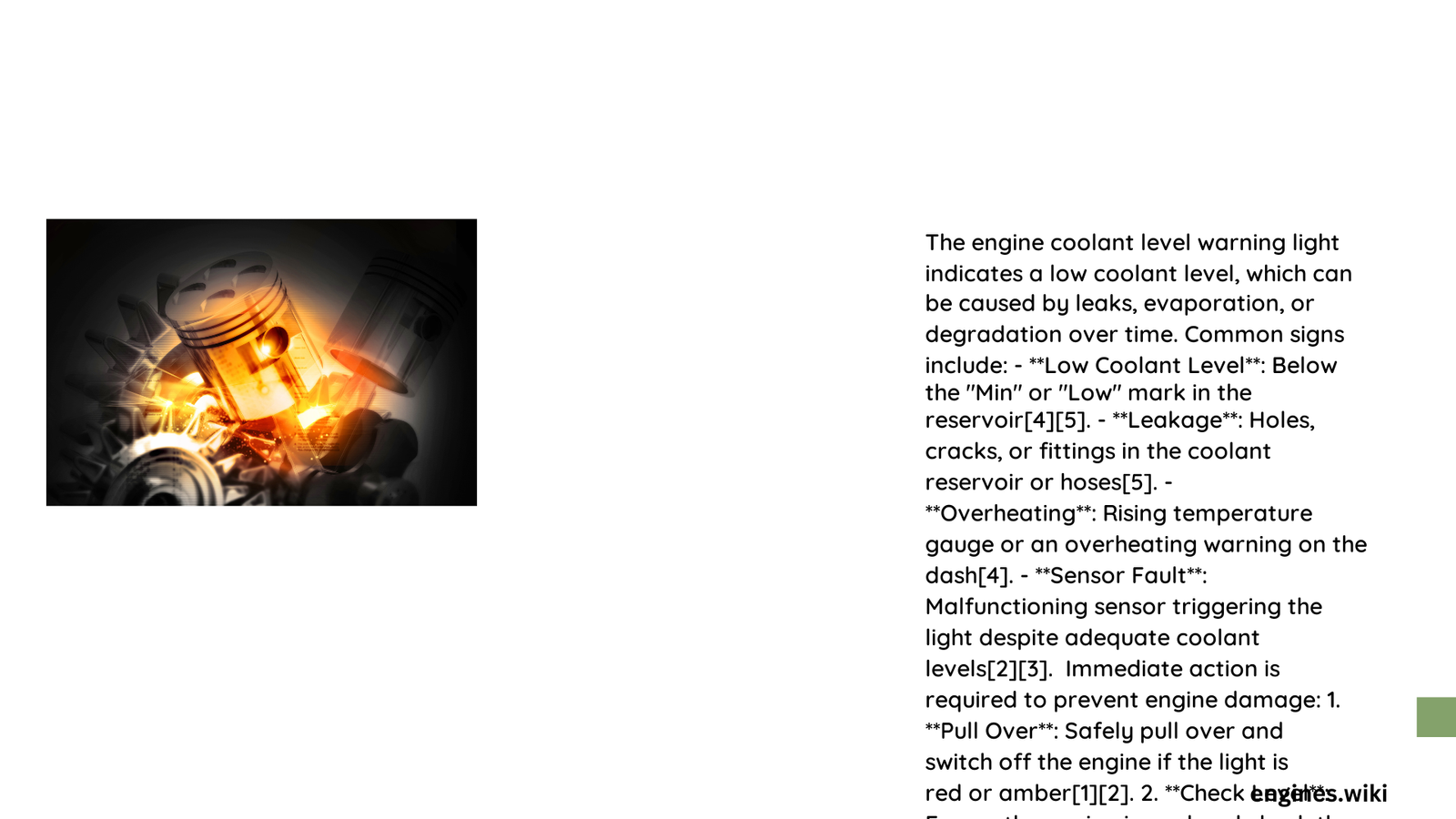The check engine coolant level warning represents a critical automotive alert signaling potential cooling system complications that could compromise engine performance and structural integrity. When this warning illuminates, it indicates a significant deviation from standard coolant reservoir levels, potentially exposing your vehicle to overheating risks, mechanical stress, and potential long-term engine damage if left unaddressed.
What Triggers the Coolant Level Warning?
Coolant level warnings emerge from multiple potential scenarios, each requiring systematic investigation and precise diagnostic approach:
How Do Coolant Sensors Detect Low Levels?
Coolant level sensors utilize sophisticated detection mechanisms:
- Float-Type Sensors: Magnetic float devices tracking liquid levels
- Electric Sensors: Two-electrode systems monitoring electrical circuit continuity
- Resistance-Based Sensors: Measuring electrical resistance changes
| Sensor Type | Detection Method | Accuracy | Response Time |
|---|---|---|---|
| Float-Type | Mechanical Movement | High | Immediate |
| Electric | Circuit Interruption | Moderate | 1-2 Seconds |
| Resistance | Electrical Impedance | Very High | Near Instantaneous |
What Are Common Causes of Low Coolant?
Potential root causes include:
- External Leakage
- Radiator cracks
- Hose deterioration
- Loose connection points
-
Damaged water pump seals
-
Internal System Issues
- Blown head gasket
- Cracked engine block
- Compromised cylinder head
How to Diagnose Coolant Level Warning?
Comprehensive diagnostic steps:
- Visual Inspection
- Check coolant reservoir levels
- Examine for visible leakage
- Inspect hose conditions
-
Verify color and consistency of remaining coolant
-
Pressure Testing
- Evaluate cooling system integrity
- Identify potential microscopic leaks
- Determine system pressure maintenance capabilities
What Are Potential Risks of Ignoring Warning?
Consequences of neglecting coolant level warnings:
- Immediate Risks
- Engine overheating
- Potential catastrophic mechanical failure
-
Reduced lubrication efficiency
-
Long-Term Damages
- Premature engine wear
- Cylinder wall scoring
- Potential complete engine replacement
How Much Does Coolant Sensor Replacement Cost?
Cost breakdown:
- Parts Range: $10 – $235
- Labor Costs: $50 – $150
- Total Replacement: $60 – $385
When Should You Seek Professional Help?
Recommended professional intervention scenarios:
- Persistent warning after self-diagnosis
- Complex leak detection requirements
- Lack of technical automotive expertise
- Advanced diagnostic needs
Pro Tips for Coolant System Maintenance

- Regular Inspections: Quarterly coolant level checks
- Use Recommended Coolant: Follow manufacturer specifications
- Monitor Color and Consistency: Clean, vibrant coolant indicates healthy system
- Address Warnings Immediately: Prevent escalating damage
Warning Signs Requiring Immediate Action:
– Steam from engine compartment
– Rapid temperature gauge fluctuations
– Sweet chemical odor
– Visible coolant puddles
Final Recommendations
Proactive maintenance and swift response to coolant level warnings can prevent expensive repairs and extend your vehicle’s operational lifespan.
References:
– CarParts.com – Coolant Sensor Diagnostics
– RepairPal – Coolant System Insights
– ASE Certified Mechanics Guide
